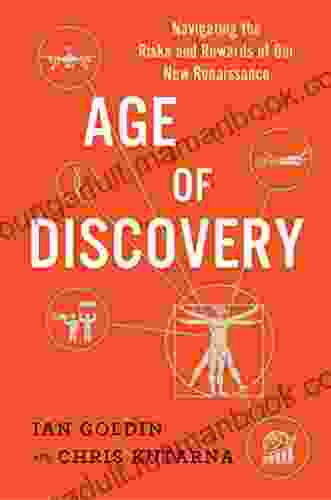How to Create Tech Products Customers Love: A Silicon Valley Product Group's Guide

In today's competitive tech landscape, it's not enough to simply build products. You need to create products that customers love—products that are useful, easy to use, and delightful to interact with.
4.6 out of 5
| Language | : | English |
| File size | : | 570 KB |
| Text-to-Speech | : | Enabled |
| Screen Reader | : | Supported |
| Enhanced typesetting | : | Enabled |
| Word Wise | : | Enabled |
| Print length | : | 362 pages |
| Lending | : | Enabled |
At [Silicon Valley Product Group's name], we've spent years honing our craft, learning what it takes to create products that customers rave about. In this article, we'll share our insights and best practices so that you can create tech products that your customers will love.
1. Start with a Deep Understanding of Your Customers
The first step to creating a product that customers love is to understand who your customers are and what they need. This means going beyond demographics and getting to know their motivations, pain points, and aspirations.
There are a number of ways to gather this information, including:
- Customer interviews: Talk to your customers to learn about their needs and pain points firsthand.
- User research: Observe how customers use your products to identify areas for improvement.
- Market research: Analyze the market to understand the competitive landscape and identify unmet needs.
Once you have a deep understanding of your customers, you can start to develop a product that meets their needs.
2. Build a Product that Is Useful and Solves a Real Problem
One of the most important factors in creating a product that customers love is to make sure that it is useful and solves a real problem. Customers are not interested in products that are simply gimmicks or that don't provide any real value.
To build a useful product, you need to focus on solving a problem that your customers actually care about. This means understanding their pain points and developing a solution that addresses those pain points.
For example, if you're building a productivity app, you need to focus on solving a specific problem that your customers face, such as staying organized or managing their tasks more efficiently.
3. Make Your Product Easy to Use
Another important factor in creating a product that customers love is to make it easy to use. Customers don't want to have to spend a lot of time figuring out how to use a product. They want to be able to get started quickly and easily.
To make your product easy to use, you need to focus on the following:
- Provide a clear and intuitive user interface: The user interface of your product should be self-explanatory and easy to navigate.
- Use simple and concise language: The text in your product should be easy to understand and free of jargon.
- Provide helpful documentation and support: Customers should be able to find the information they need to get started with your product easily.
By making your product easy to use, you'll make it more likely that customers will adopt it and continue using it.
4. Design a Product that Is Delightful to Use
In addition to being useful and easy to use, a great tech product is also delightful to use. This means that it is enjoyable to interact with and makes the user feel good.
There are a number of ways to make your product more delightful to use, including:
- Use beautiful design: The visual design of your product should be appealing and consistent.
- Provide a seamless user experience: The transitions between different parts of your product should be smooth and effortless.
- Add unexpected touches: Delight your customers with unexpected features or gestures.
By designing a product that is delightful to use, you'll increase the chances that customers will love it and recommend it to others.
5. Continuously Collect Feedback and Iterate
Once you've launched your product, it's important to continuously collect feedback from your customers and iterate on your product based on that feedback.
There are a number of ways to collect feedback from your customers, including:
- Customer surveys: Send out surveys to your customers to gather feedback on their experience with your product.
- App store reviews: Read reviews of your product on app stores to see what customers are saying about it.
- Social media: Monitor social media for mentions of your product and customer feedback.
Once you've collected feedback, it's important to take action on it. This means making changes to your product based on the feedback you've received.
By continuously collecting feedback and iterating on your product, you can ensure that it continues to meet the needs of your customers and that they love using it.
Creating tech products that customers love is a challenging but rewarding endeavor. By following the best practices outlined in this article, you can increase the chances that your products will be successful and that your customers will love them.
Here are some additional tips for creating tech products that customers love:
- Be passionate about your product: If you're not passionate about your product, it will be difficult to create a product that your customers will love.
- Be willing to take risks: Don't be afraid to experiment and try new things. Some of your best ideas may come from taking risks.
- Never give up: Creating a successful tech product takes time and effort. Don't give up if you don't see immediate results. Keep iterating on your product and collecting feedback from your customers.
By following these tips, you can increase the chances that your tech products will be successful and that your customers will love them.
4.6 out of 5
| Language | : | English |
| File size | : | 570 KB |
| Text-to-Speech | : | Enabled |
| Screen Reader | : | Supported |
| Enhanced typesetting | : | Enabled |
| Word Wise | : | Enabled |
| Print length | : | 362 pages |
| Lending | : | Enabled |
Do you want to contribute by writing guest posts on this blog?
Please contact us and send us a resume of previous articles that you have written.
 Top Book
Top Book Novel
Novel Fiction
Fiction Nonfiction
Nonfiction Literature
Literature Paperback
Paperback Hardcover
Hardcover E-book
E-book Audiobook
Audiobook Bestseller
Bestseller Classic
Classic Mystery
Mystery Thriller
Thriller Romance
Romance Fantasy
Fantasy Science Fiction
Science Fiction Biography
Biography Memoir
Memoir Autobiography
Autobiography Poetry
Poetry Drama
Drama Historical Fiction
Historical Fiction Self-help
Self-help Young Adult
Young Adult Childrens Books
Childrens Books Graphic Novel
Graphic Novel Anthology
Anthology Series
Series Encyclopedia
Encyclopedia Reference
Reference Guidebook
Guidebook Textbook
Textbook Workbook
Workbook Journal
Journal Diary
Diary Manuscript
Manuscript Folio
Folio Pulp Fiction
Pulp Fiction Short Stories
Short Stories Fairy Tales
Fairy Tales Fables
Fables Mythology
Mythology Philosophy
Philosophy Religion
Religion Spirituality
Spirituality Essays
Essays Critique
Critique Commentary
Commentary Glossary
Glossary Bibliography
Bibliography Index
Index Table of Contents
Table of Contents Preface
Preface Introduction
Introduction Foreword
Foreword Afterword
Afterword Appendices
Appendices Annotations
Annotations Footnotes
Footnotes Epilogue
Epilogue Prologue
Prologue Norman Morrow
Norman Morrow Jim Aparo
Jim Aparo Terri Weeks
Terri Weeks John Ellsworth
John Ellsworth Molly Maco
Molly Maco Allison Lawrence
Allison Lawrence R Bruce Hoadley
R Bruce Hoadley Dorothy H Cohen
Dorothy H Cohen Peter Mayle
Peter Mayle Vishal Mondkar
Vishal Mondkar Brent Yan
Brent Yan Dave Bolick
Dave Bolick Ruth Sherlock
Ruth Sherlock Ray Hitchins
Ray Hitchins Jim Butcher
Jim Butcher Deidre Bevers
Deidre Bevers Erin Stern
Erin Stern Emma Tallon
Emma Tallon Nancy Revell
Nancy Revell Pam Anderson
Pam Anderson
Light bulbAdvertise smarter! Our strategic ad space ensures maximum exposure. Reserve your spot today!

 Truman CapoteWhirlwind of Mosaic Pieces: An Intriguing Exploration of Fragmented Memories,...
Truman CapoteWhirlwind of Mosaic Pieces: An Intriguing Exploration of Fragmented Memories,... Ronald SimmonsFollow ·13.6k
Ronald SimmonsFollow ·13.6k Anton FosterFollow ·9.7k
Anton FosterFollow ·9.7k Robert BrowningFollow ·15.2k
Robert BrowningFollow ·15.2k Trevor BellFollow ·18.5k
Trevor BellFollow ·18.5k Todd TurnerFollow ·14.9k
Todd TurnerFollow ·14.9k Jamal BlairFollow ·12.8k
Jamal BlairFollow ·12.8k Carlos DrummondFollow ·2.1k
Carlos DrummondFollow ·2.1k Ed CooperFollow ·15.8k
Ed CooperFollow ·15.8k

 Yukio Mishima
Yukio MishimaUnveiling the Zimmermann Telegram: A Pivotal Document in...
The Zimmermann Telegram, a diplomatic...

 George Martin
George MartinFearful Stories and Vile Pictures to Instruct Good Little...
In the annals of children's literature, few...

 Grant Hayes
Grant HayesJessica the Viscount Wallflower: A Tale of Transformation...
In the opulent ballrooms and glittering...

 Jerome Blair
Jerome BlairThe Economics of the Global Defence Industry: A...
The global...

 Blake Kennedy
Blake KennedyBreath of Heron - A Window into the Poetic Depths of...
In the realm of...
4.6 out of 5
| Language | : | English |
| File size | : | 570 KB |
| Text-to-Speech | : | Enabled |
| Screen Reader | : | Supported |
| Enhanced typesetting | : | Enabled |
| Word Wise | : | Enabled |
| Print length | : | 362 pages |
| Lending | : | Enabled |











